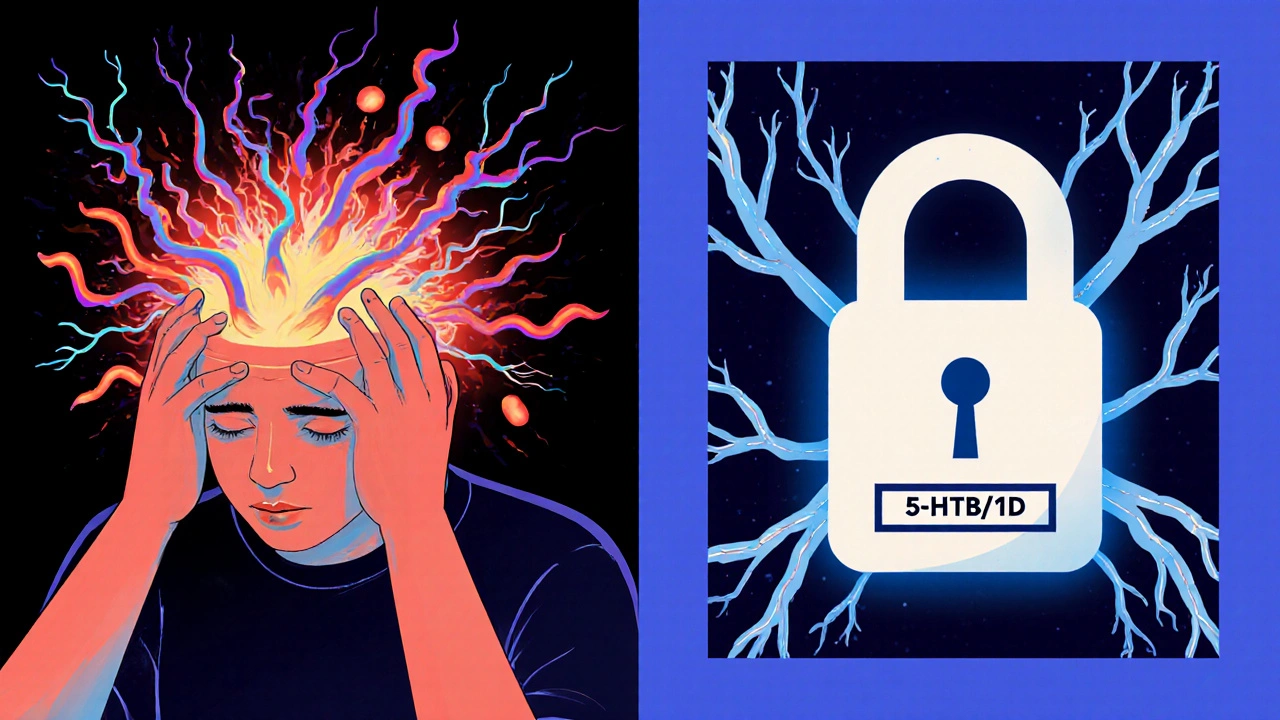Triptan Side Effects: What You Need to Know Before Taking Them
When you’re hit with a bad migraine, triptans, a class of prescription drugs designed to stop migraine attacks by narrowing blood vessels in the brain and blocking pain pathways. Also known as serotonin receptor agonists, they’re one of the most effective treatments for acute migraines. But like any powerful medicine, they don’t come without risks. Many people take triptans without knowing what side effects to watch for—some are mild, others can be serious. If you’ve ever felt chest tightness, dizziness, or a strange tingling after taking one, you’re not imagining it. These aren’t rare reactions—they’re well-documented.
Common triptan side effects, include nausea, drowsiness, dry mouth, and a feeling of pressure or warmth in the face, neck, or chest. These usually fade within an hour and aren’t dangerous for most people. But some side effects need attention. If you get chest pain, shortness of breath, or sudden weakness on one side of your body, stop taking the drug and get help. These could signal a rare but serious reaction like serotonin syndrome, a condition caused by too much serotonin in the brain, often from mixing triptans with SSRIs or SNRIs. It’s not common, but it’s life-threatening. Also, if you have heart disease, high blood pressure, or a history of stroke, triptans might not be safe for you at all. Your doctor should check your history before prescribing them.
Not all triptans are the same. sumatriptan, the first and most widely used triptan, has more reported side effects than newer versions like rizatriptan or eletriptan. Some people tolerate one triptan fine but react badly to another. That’s why trying different options under medical supervision can make a big difference. Also, taking too many doses in a short time—like more than two in 24 hours—raises your risk of rebound headaches and worse side effects. Stick to the label. Don’t double up because the first dose didn’t work fast enough.
What you won’t find on most patient info sheets is how these side effects affect daily life. People report feeling foggy for hours after a triptan. Others say they can’t drive or focus at work afterward. These aren’t just "minor" issues—they impact productivity, safety, and mental well-being. And if you’re taking triptans more than 10 days a month, you might be heading toward medication-overuse headaches, which make migraines worse over time.
The posts below give you real, practical insights into how triptans compare with other migraine treatments, what side effects users actually experience, and how to spot the warning signs before they become emergencies. You’ll find comparisons with alternatives like ditans and gepants, tips on avoiding drug interactions, and what to do when triptans stop working. This isn’t theory—it’s what people are dealing with every day.
Migraine Medications: Triptan Interactions and Limitations
Triptans are the most common acute migraine treatment, but they have serious interactions, contraindications, and limitations. Learn how they work, who should avoid them, and what to do if they don't work.
Read more
